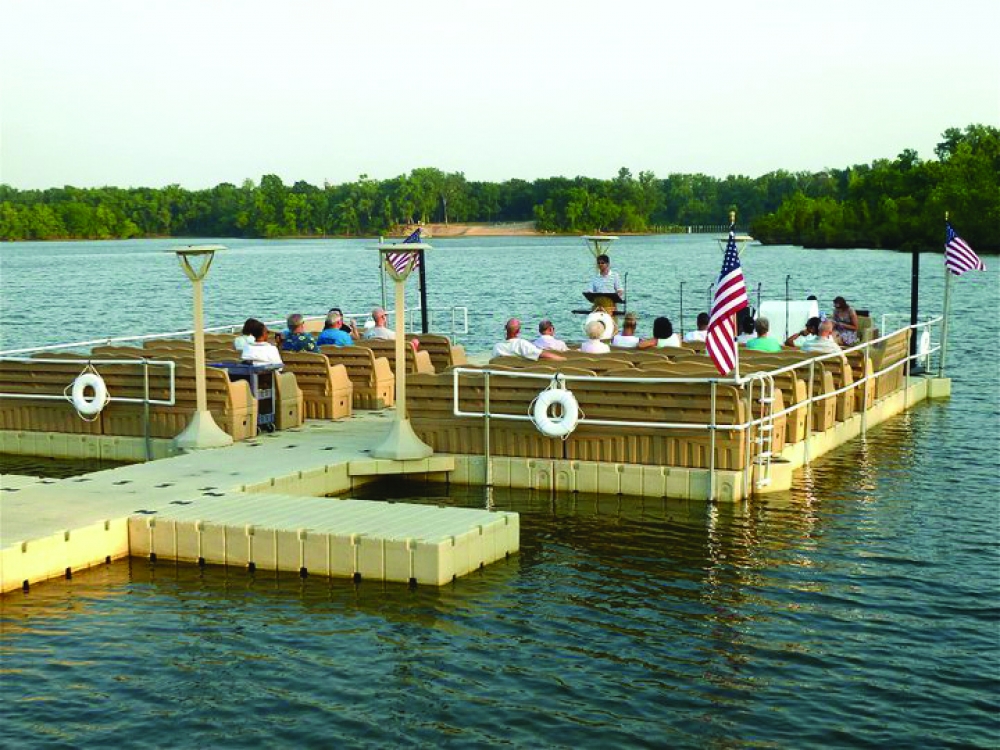Upgrade Your Waterfront With Resilient Floating Docks
Updating your waterside with sturdy floating docks can substantially enhance both functionality and visual appeals, giving a functional option for various water activities. With an array of products offered, including low-maintenance alternatives and conventional wood, picking the best dock can complement your personal style and meet practical demands.
Advantages of Floating Docks
Floating docks offer a plethora of advantages that improve their allure for numerous maritime applications. Unlike conventional fixed docks, floating docks surge and loss with the tide, guaranteeing regular availability for watercrafts and watercraft no matter of environmental problems.
Furthermore, floating docks are less complicated to install and transfer, providing versatility for short-lived or seasonal use. Their modular layout enables customization to fit specific needs, whether for personal marinas, residential waterfronts, or industrial applications.
Moreover, floating docks create minimal disturbance to the water atmosphere, maintaining regional communities and minimizing the possibility of erosion. They likewise supply boosted security and stability for users, as their buoyant nature provides a much more flexible surface than inflexible frameworks.
In addition, floating docks can help with a varied variety of tasks, such as angling, swimming, and entertainment boating, making them a useful possession for waterside advancement. Their adaptability and functionality make floating docks a favored selection for a range of maritime projects.
Choosing the Right Materials
Choosing appropriate materials for floating docks is crucial to their longevity, performance, and general effectiveness. When picking materials, consider elements such as environmental exposure, upkeep needs, and architectural stability. Usual products consist of wood, plastic, light weight aluminum, and composite options, each offering unique benefits and negative aspects.
Timber, while aesthetically pleasing, requires normal maintenance to stop rot and decay. Pressure-treated timber can boost resilience, but it may still yield to water damage gradually. Plastic floats, typically made from high-density polyethylene, are immune to deterioration and call for minimal maintenance, making them an appealing option for low-maintenance applications.
Aluminum is an additional feasible alternative, understood for its strength and light-weight homes. It is resistant to rust and can hold up against harsh weather, although it may be more costly than other products. Compound products incorporate the most effective attributes of timber and plastic, using a resilient and low-maintenance alternative that imitates the appearance of timber without the associated downsides.
Eventually, the option of material ought to line up with the intended usage, ecological factors to consider, and budget plan restrictions, guaranteeing a useful and long lasting floating dock that satisfies your specific needs.
Installment Process Review
The successful installment of a drifting dock counts on careful planning and implementation, ensuring that it runs successfully in its designated atmosphere. The initial step includes assessing website problems, including water depth, shoreline features, and dominating weather patterns, which will certainly notify the dock design and anchoring system.
Adhering to the website analysis, the following stage is to prepare the floating dock elements. This consists of putting together the frame, safeguarding drifts, and connecting any essential hardware. It is important click to read more to guarantee that all connections are waterproof and robust to hold up against aquatic conditions.
As soon as the dock is assembled, the installation procedure begins with placing the dock in the water. This can entail a crane or various other lifting devices, specifically for larger frameworks. Appropriate alignment is essential for performance and safety.

Upkeep Tips for Longevity
Normal maintenance is important for ensuring the longevity and optimum performance of a drifting dock. To accomplish this, start with routine evaluations at least two times a year, focusing on the integrity of the dock's structure, consisting of the flotation gadgets and connecting hardware. Try to find indicators of damages, corrosion, or wear, and attend to any kind of issues immediately to stop additional wear and tear.
Cleansing is one more crucial element of maintenance. Eliminate debris, algae, and barnacles from the dock's surface area to stop slippery problems and keep visual charm. Utilize a light detergent and a soft brush to prevent harming the dock's products.
Additionally, make certain that the dock is properly secured and protected to hold up against seasonal changes in water degrees and climate condition. Inspect the anchoring system for security and make changes as essential.
Enhancing Your Outside Visual
To produce an aesthetically enticing exterior space, integrating a drifting dock can significantly improve the general visual of your beachfront home. Floating top article docks are not only practical however can also serve as a striking centerpiece that complements the natural look at this site environments - dock company. Readily available in numerous materials and layouts, these docks can be customized to match your property's architectural design and landscape
The enhancement of attractive aspects, such as incorporated lighting or stylish barriers, better raises the dock's visual appeal. Consider making use of all-natural timber surfaces, which blend seamlessly with the setting, or selecting contemporary materials like light weight aluminum or composite outdoor decking that supply a streamlined, contemporary look.
Tactically positioning planters or seating areas on or around the dock can develop inviting areas that motivate leisure and pleasure of waterfront sights. In addition, integrating shades and structures that harmonize with your landscape will develop a cohesive visual throughout your outside location.

Verdict

Upgrading your beachfront with resilient floating docks can significantly improve both capability and aesthetics, supplying a flexible solution for various water activities. Unlike conventional fixed docks, floating docks increase and autumn with the tide, guaranteeing consistent access for boats and watercraft no matter of ecological problems.Selecting suitable materials for floating docks is vital to their durability, performance, and overall efficiency.When the dock is constructed, the installation process begins with placing the dock in the water.In recap, floating docks deal many advantages, including versatility to water degree adjustments and a selection of material options.
Comments on “Innovative Floating Docks: The Future of Beachfront Gain Access To and Recreation”